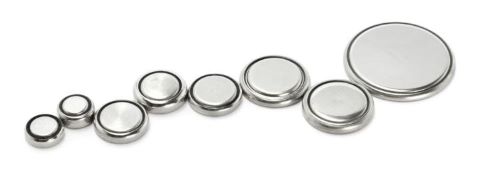Lithium-ion (Li-ion) batteries are everywhere.
Li-ion batteries – the most popular rechargeable batteries – come in multiple sizes and shapes. They power everything from smart phones, laptops, hand-held power tools, and E-bikes to scooters, toys, and electric cars.
All batteries can be hazardous and pose a safety risk. Li-ion batteries – which store a large amount of energy in a small space – are more easily damaged and volatile than other batteries. If damaged or improperly charged, stored, or disposed of, Li-ion batteries can catch fire or explode. No large-scale database tracks battery-caused fires, but they are a problem worldwide.
Lithium button and coin batteries – often hidden in plain sight at home – pose a special risk to children. If swallowed or placed in the nose or ears, the batteries can cause serious injury or death. Learn more here.

Follow these tips to help minimize the risks associated with Li-ion batteries.
Use and storage
- Always follow the manufacturer’s instructions.
- Always buy devices and batteries that are certified by UL or another testing laboratory.
- Handle carefully. Do not throw, drop, or tamper with batteries.
- Check batteries for signs of damage and don't use any that are swollen, dented, torn, or show other signs of damage or wear.
- Store your batteries in a safe place, out of sight and reach of children.
- Keep batteries in a dry location at room temperature. Do not leave them in the sun or in a hot or cold car.
- Check to make sure batteries in your children’s toys and devices are secure.
- Seek medical attention IMMEDIATELY if you or someone you know swallows a battery.
- Remove Li-ion batteries from items (e.g., holiday decorations) before storage.
- Never place Li-ion batteries in your household garbage or recycling container.
- Properly recycle Li-ion batteries. Learn more here.
Charging
- Always follow the manufacturer's instructions.
- Do not charge batteries for longer than the manufacturer’s recommendation. Overcharging can cause your battery to overheat, which can lead to fire or explosion.
- Use the battery, cord, and power adapter that came with the device.
- Always plug directly into a wall electrical outlet.
- Never leave a battery charging overnight.
- When charging, never block your primary way in or out of a room/space.
- Charge your device at room temperature where you can see it. Soft surfaces, like a couch or bed, can trap heat around the battery and cause the device to overheat.
- Inspect batteries after they are first installed and periodically after recharging. If they appear damaged, do not recharge.
- Do not attempt to modify a battery – it can increase the risk of overheating, fire, and explosion.

